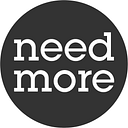Dropbox Paper Will Set Us Free
When I was just out of high school, I got a job at Kinko’s. This would have been around 1990. Back then, it was still just slightly cool.
I loved this job because I got to be around Macintosh computers, a luxury I did not enjoy at home. (They were expensive!) This was the heyday of “desktop publishing,” a very exciting topic around 1990. You could mix text and images, the text had characters with actual variable-width type, and you could even draw primitive drawings with the mouse.
About the only limit you had was that, no matter what you made, it was inevitably destined to be printed on an 8½” by 11” piece of paper.
The application we used at the time was Microsoft Word. There were others, but early-on it was very popular. I’m not sure it had even been released for Windows yet. Just Mac. It went on to dominate the word-processing space for ages, and for some it still does. But its fundamental paradigm hasn’t changed much over the years.
Since the day it was released, at least on any GUI platform, it has presented the user with a blank sheet of paper. Technically you can write whatever you want in a system like that, but because the fundamental assumption is that you’re going to present your work on the printed page, it always preserved a whiff of “desktop publishing.”
In 2006, Google bought a company that was developing a browser-based, collaborative version of software like Word. At the time it was very exciting, and soon Google Docs was the go-to place to write documents. There were plenty of advantages, and because it was built to run in a browser it felt much more modern and useful.
But the same limitation remained: the printed page. It’s still primarily intended to lay out 8½” by 11” documents.
It’s also ugly as shit. I can’t stand Material Design, though I get where it’s coming from and it’s better than nothing. But we can do much better. For the love of all that is holy, Google Docs defaults to Arial, for everything from the user interface to the text you start typing.
It’s time to move on. I’m tired of writing for a printed page, when 99% of what I write will never, ever see a printed page. I want something that is simpler, free of that skeumorphic baggage, but without sacrificing that sweet real-time collaboration of Google Docs.
Sure, let’s just name it Paper.
Dropbox Paper has been getting mixed reviews, but I love it. It’s essentially competing with Google Docs, but to me they’re not even in the same league. The reason is definitely the design decisions that went into the product, resulting in a simplicity to get started and use it day-to-day that belies a deep and rich featureset that shines.
And would you look at that. A legit font!
It is often compared with Google Docs so what the heck, let’s compare them. I have a primary issue with products like Docs in that it is focused around the same paradigm that Word, Pages, and every word processor in the history of time has been focused on: the printed page. This forces it to be very awkward for writing in the modern era, and it has to emulate much of the complexity of that dated design. Sure, it’s simpler than Word, but it’s still forced to have the page silhouette and the same basic toolbar at the top, options for headers and footers, and so on.
I never think about that stuff. Why would I?
Paper skips all that crap. It assumes you’re okay with writing in Markdown, which is pretty damn common these days, even if you’re not conscious that you’re using it. It is very embed-friendly, and very drag-and-drop friendly. It works great with a number of popular services, and can talk to Slack.
Much like competing products, it lets you co-edit documents in realtime, and works across all the devices I would consider using. This is table stakes in this day and age, but Paper handles it very well. You can be notified when someone is reading your document, who is looking at it while you are, and of course what part of it they might be working on.
Media and embedded content is handled well. If you paste several images in sequence, they form into a gallery. Clicking on one image makes it full screen, and lets you flip through all the images quickly. Comments work well on images, giving you the option to comment on one or more specific areas of an image, or the image overall. Simple.
Paper consolidates all your todos for you. This is something that OneNote has offered in theory, but it wasn’t designed that way from the start so it doesn’t work very well. In fact, it doesn’t work at all on iOS devices. But Paper already supports that very same feature on iOS. That means I can take notes at our Monday meeting, quickly assigning one after another task to the team (or client), and they’re just on their todo lists like that. They can check them off, and the original document updates. Simple.
A similar feature is linking to your other documents with a + prefix. I don’t know this to be part of any Markdown spec I’m familiar with, but it makes a ton of sense in this context.
The integration with my calendar is really nice. When you log in, you see a sidebar with your day’s events, and you’re one click away from creating a new document that has logical places for meeting notes, next steps, and so on, and it offers to invite everyone who was invited to the event. Simple.
Another favorite feature is that it can intelligently handle lists, and allows you to sort them. So if you have a series of bulleted or numbered items, or a series of task checkboxes, you can just drag them around and it will update. It also understands the common keyboard commands TABand Shift-TAB to indent and outdent list items, making it very good for quickly jotting down ideas. This works with checkboxes too.
It’s perfect, right? Right??
Paper’s biggest shortcoming, and one I hope they address in due time, is the disconnect from Dropbox. While it works on the same website, and you can embed dropbox files very quickly, it is bizarre to have to organize your Paper documents in a folder structure that’s completely unrelated to your Dropbox folder structure. I assume this is for a technical reason, because it doesn’t make much sense, but it’s a source of frustration for the team.
Some aspects seem a bit unfinished, as well. You can see a consolidated list of your tasks, but not of outstanding (aka unresolved) comments. Resolved comments act like they’re deleted. On the iPad Pro app, it would be great if you could quickly add a drawing, without having to switch to a third-party app.
But overall, I find Paper to be something of a revelation. It feels remarkably fast, intuitive, and well-designed. It also seems like they’re continuing to improve the product at a fairly rapid pace. Let’s hope they keep it up.
Simple.

